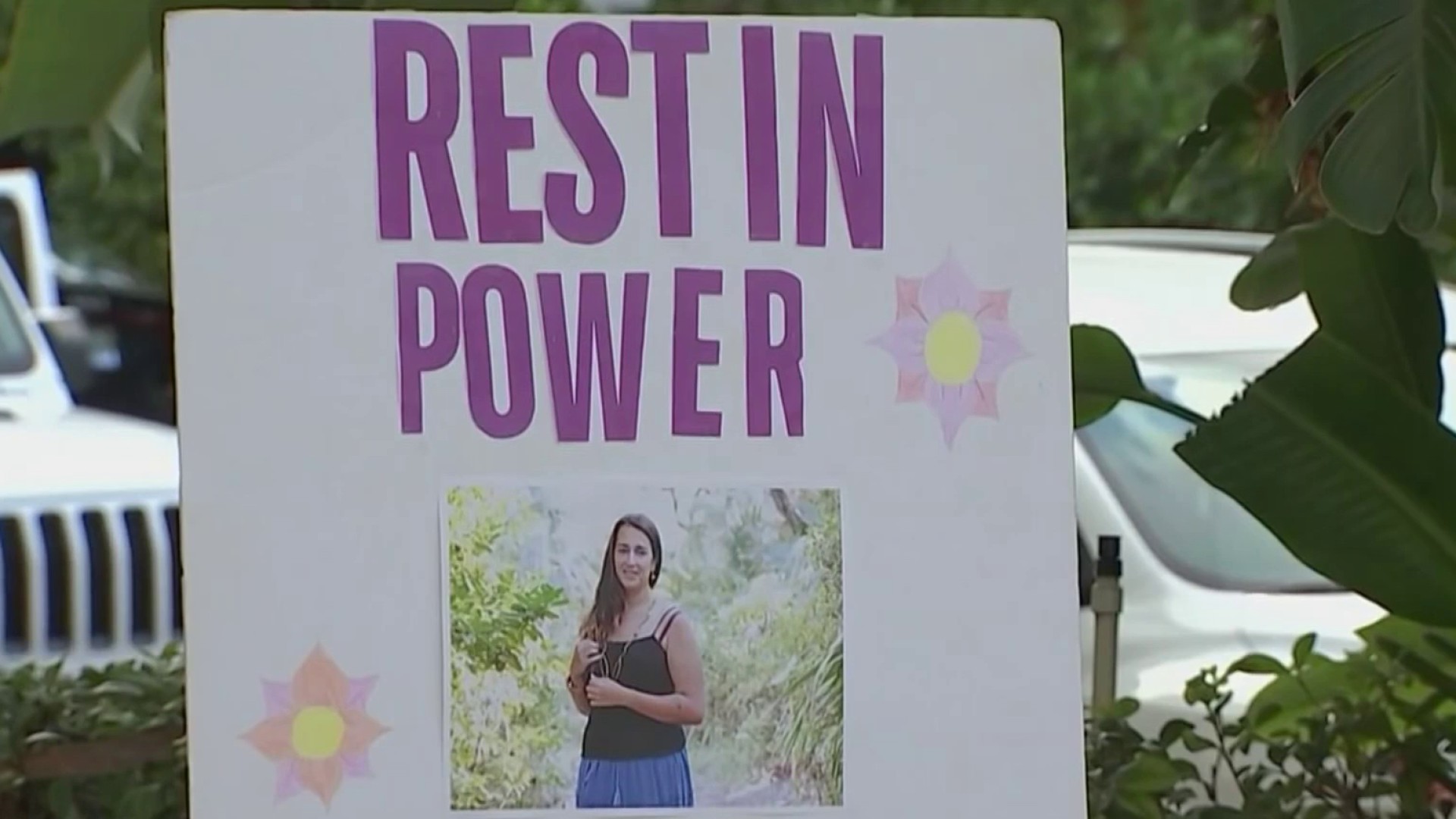Twice a year, we change our clocks, but there is always confusion as to when to make the change and concern as to how it will affect our bodies and sleep patterns.
As we gear up to "spring forward" on March 12, we are also preparing to lose one hour of very valuable sleep.
Here is everything you need to know about the pesky time change and a few ways sleep specialists recommend to prepare your body for the change.
When does daylight saving time start?
Get South Florida local news, weather forecasts and entertainment stories to your inbox. Sign up for NBC South Florida newsletters.
This year daylight saving will fall on March 12 at 2 a.m. which unfortunately means in an instant 2 a.m. becomes 3 a.m. making us lose an hour of sleep.
Under provisions of the Energy Policy Act of 2005, which amended the Uniform Time Act of 1966, daylight saving time begins the second Sunday in March.
When does daylight saving time end?
Local
Daylight saving time will end on the first Sunday in November at 2 a.m. This year that falls on Nov. 5, 2023.
What is daylight saving time?
Daylight saving time is a changing of the clocks that typically begins in spring and ends in fall in what is often referred to as "spring forward" and "fall back."
On those days, clocks either shift forward or backward one hour.
But it wasn't always that way.
Clocks used to spring ahead on the first Sunday in April and remained that way until the final Sunday in October, but a change was put in place in part to allow children to trick-or-treat in more daylight.
In the United States, daylight saving time lasts for a total of 34 weeks, running from early-to-mid March to the beginning of November in states that observe it.
Some people like to credit Benjamin Franklin as the inventor of daylight saving time when he wrote in a 1784 essay about saving candles and saying, "Early to bed, early to rise makes a man healthy, wealthy and wise." But that was meant more as satire than a serious consideration.
Germany was the first to adopt daylight saving time on May 1, 1916, during World War I as a way to conserve fuel. The rest of Europe followed soon after.
The United States didn't adopt daylight saving time until March 19, 1918. It was unpopular and abolished after World War I.
On Feb. 9 ,1942, Franklin Roosevelt instituted a year-round daylight saving time, which he called "war time." This lasted until Sept. 30, 1945.
Daylight saving time didn't become standard in the US until the passage of the Uniform Time Act of 1966, which mandated standard time across the country within established time zones. It stated that clocks would advance one hour at 2 a.m. on the last Sunday in April and turn back one hour at 2 a.m. on the last Sunday in October.
States could still exempt themselves from daylight saving time, as long as the entire state did so. In the 1970s, due to the 1973 oil embargo, Congress enacted a trial period of year-round daylight saving time from January 1974 to April 1975 in order to conserve energy.
Why does daylight saving time affects us so much?
Every year, around this time, we "spring ahead" an hour to help us make the best use of daylight during the summer. But while we enjoy soaking up those extra hours of sun, the reality is it can take a few days to get used to time change.
According to a study from the American Academy of Sleep Medicine, 55% of adults in the United States feel tired during the spring daylight saving time change.
In fact, the study revealed it can take five to seven days to adjust to daylight saving time.
"This is because we lose an hour of sleep. Many of us, due to work-life demands, are already sleep deprived. Daylight saving time, which disrupts our internal clock temporarily, is an added stressor," Dr. Carol Ash, a sleep specialist with RWJBarnabas Health, told TODAY.
What can I do to prepare my body for daylight saving time?
Daylight saving time does not necessarily have to completely alter your sleep routine. Luckily, you can face the time change head-on by following these expert-approved tips that work equally well for kids and adults alike.
- Reconsider your bedtime
"Try going to bed 15 minutes earlier, starting two to three days before the time change. This will help make sure you are well-rested before the clock change so any resulting 'sleep debt' will feel less extreme," Candice A. Alfano, Ph.D., director of the University of Houston's Sleep and Anxiety Center of Houston, told TODAY. - Shift your wakeup call
"A few days before daylight saving time, set your wakeup time to 30 minutes ahead. This will narrow the difference and make it easier for you to adjust to the time change," Dr. Ana Krieger, medical director of the Center for Sleep Medicine at Weill Cornell Medicine and New York-Presbyterian, said. - Readjust your routine
"Take advantage of your earlier start for the day, and shift your activities to an earlier schedule, including dinner, exercise and bedtime," Krieger suggested. - Trick your brain:
"The brain looks for visual cues to know what time it is. Another thing you can do is change the time on a wristwatch 15 minutes ahead each day before daylight saving time to provide that visual cue," Ash said.
What's the deal with the Sunshine Protection Act?
Under legislation unanimously passed by the Senate last year known as the Sunshine Protection Act, the seasonal changing of clocks would effectively be eliminated in the U.S., except for Hawaii and parts of Arizona.
Despite passage in the Senate, the bill has stalled in the House, where it remained in a committee until the expiration of the previous Congress.
Overall, thoughts on the potential shift vary.
The Sunshine Protection Act was introduced by Sen. Marco Rubio, R-Fla., who suggested it would reduce crime, encourage kids to play outside and lower the risk of heart attacks and car accidents.
"There’s some strong science behind it that is now showing and making people aware of the harm that clock-switching has," Rubio said on the Senate floor in March, NBC News reported.
A 2020 study found that fatal traffic accidents in the U.S. rose 6% in the week after daylight saving started. Other studies have found that the switch to daylight saving brings small increases in workplace injuries and medical errors in the days following the change. A 2019 study, meanwhile, found that the risk of heart attacks went up in the week after clocks sprung forward, though other research did not find such an increase.
The research overall is mixed, however, and the American Academy of Sleep Medicine supports the opposite switch to permanent standard time, as research shows that bodies function best with more sunlight in the morning.
“I have received calls from constituents who prefer permanent standard time because they have safety concerns for children who have to wait too long in the dark during winter for the school bus," said Rep. Jan Schakowsky, of Illinois' 9th Congressional District and a Democratic member of the House Energy and Commerce Committee, where the bill currently sits.
Which states observe daylight saving time?
Nearly every U.S. state observes daylight saving time, with the exceptions of Arizona (although some Native American tribes do observe DST in their territories) and Hawaii. U.S. territories, including Puerto Rico, American Samoa, Guam and the U.S. Virgin Islands, do not observe daylight saving time.
Which is correct: daylight saving time or daylight savings time?
According to thesaurus.com, the correct answer is: daylight saving time.
"Daylight-saving time (singular saving) is technically the correct version: the practice is saving daylight," the website says. "Still, daylight-savings time (with the plural savings) is so commonly used that it’s become an accepted variant of daylight-saving time."
Thesaurus.com says the "s" at the end of the phrase may have caught on because the plural of "saving" is often used when referring to money -- for example, a savings account.
"Then there’s the question of the hyphen," the explanation continues, "Some leave it off while others include it. We hyphenate because daylight-saving together modifies the word time that directly follow



